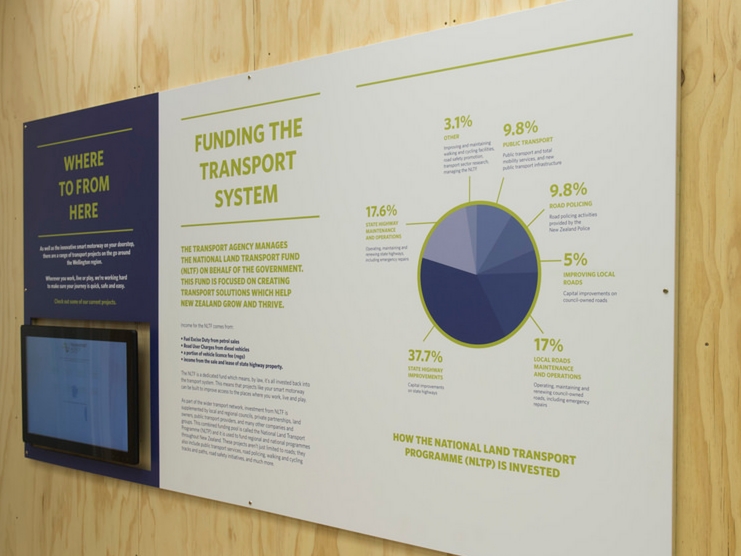Who started the smart motorway project and what was the need they were trying to address?
The New Zealand Transport Agency (NZTA) manages and develops the state highway network. In a 2009 Ngauranga to Airport study, NZTA found that the section of State Highway 1 between Ngauranga and the Terrace Tunnel had:
- heavy congestion
- unpredictable journey times
- a relatively bad crash record.
NZTA investigated the issue further and thought about potential solutions. The smart motorway was the best solution as it addressed the initial need but with some additional ideas that would ensure the finished outcome was fit for purpose.
The smart motorway:
- offered a fourth northbound lane within the existing motorway footprint of land
- managed any additional risk put in place by removing the road shoulder to make way for the fourth lane
- makes best use of the existing asset without the need to build a whole new road
- is a proven and effective system
- builds on Wellington’s existing intelligent transport system.
What are the key stages and resources required to turn the existing motorway into a smart motorway?
The system chosen to develop this project is the ECI (Early Contractor Involvement). This differs from the usual process of investigation, design and construction where each stage is a decision gateway before it can proceed.
Involving a team including contractor, civil designer and other technical specialists in the early stages of a project brings their expertise and experience into its development. This can create innovation and savings in the project; for example repurposing the Kaiwharawhara Bridge instead of demolishing it and rebuilding a whole new one.
It is rather like being part of a project at school, in that rather than simply being told when to do your part and what your role will be, you are instead involved at the beginning to give your opinions and other input on the best way to get the project done.
How do you plan and keep track of a project like this?
The contractor uses several planning tools to manage the construction phase. People use whiteboards but also software like spreadsheets to help them. NZTA receives an agreed work plan and meets weekly with the contractor and design consultant to ensure the project is on track, risks are identified and any issues are managed quickly and efficiently.
What reviews of progress have happened and why are they an important part of this project?
Weekly meetings ensure progress is well monitored and managed. Financial forecasting is important, as is accounting for costs. Regular financial audits occur. NZTA has a team dedicated to monitoring project expenditure and progress. Also, government auditors (Audit New Zealand) can and do select projects to review.
What kinds of functional modelling were used in the design phases of this project?
Functional models are representations of potential technological outcomes. They exist in many forms for example; thinking, talking, drawing, physical mock-ups, or computer aided simulations. The purpose of functional modelling is to test design concepts to see if they are suitable for use in the development of an outcome.
Designers use special computer programmes called traffic models to simulate the number of vehicles on a road and how they flow. This information helps them assess what will happen when they apply different solutions to a problem. For example what will be the effect on the whole road network if a roundabout is built, or would traffic lights give better results? Three traffic models have been developed for the smart motorway project:
- SATURN model
This model is called the Wellington Traffic Model (WTM). It has been used for all Wellington urban motorway projects, including the design phases of the current Ngauranga to Aotea Quay (NtAQ) project, for the economic assessment of benefits such as travel time savings and reducing congestion. - METANET model
This is a mathematical model developed for “real time” traffic simulation. - VISSIM model
This model simulates each individual driver’s behaviour to replicate the traffic conditions in the study area.






